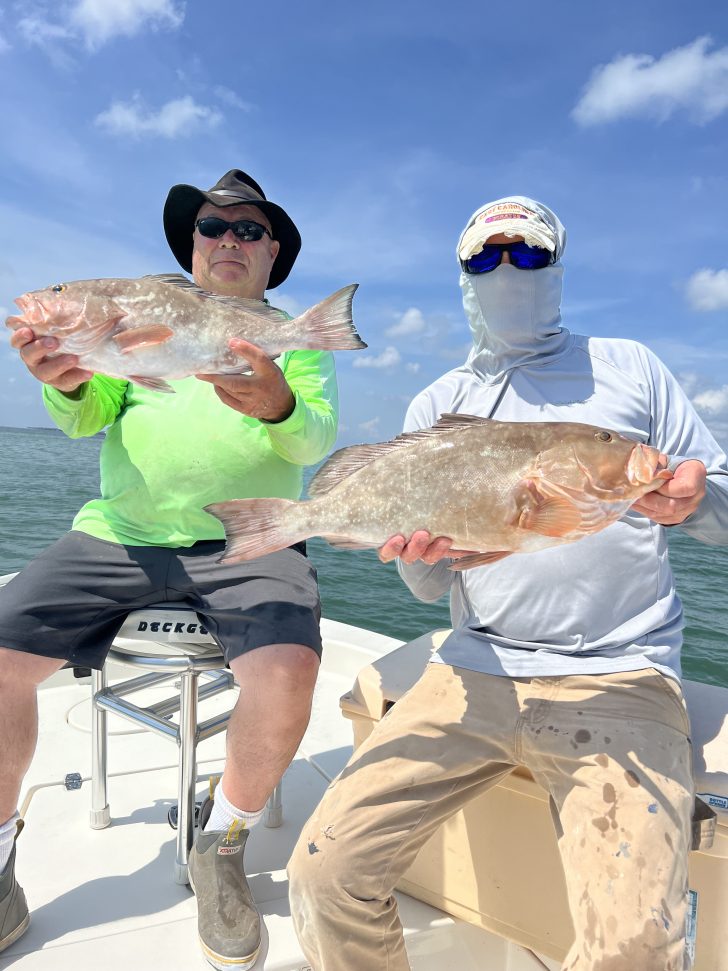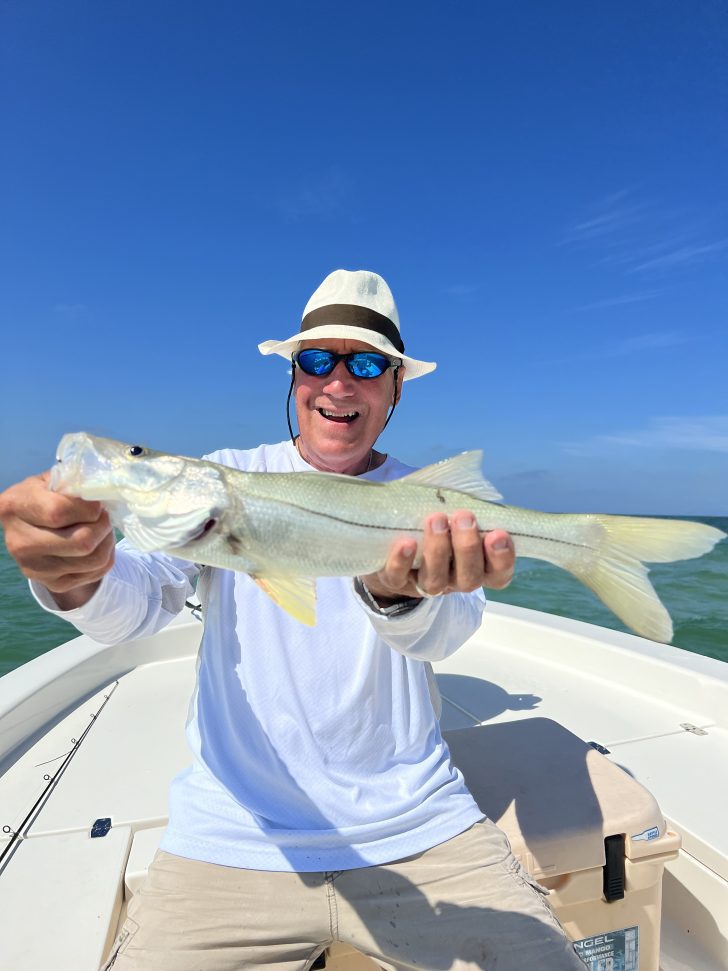By: Captain Terry Fisher

Springtime brings out the best in people and fish. The fish are less lethargic and more aggressive. Strikes become more aggressive on both artificial and live presentations. Artificial presentations include soft plastics, topwater, swim and twitch baits. Shrimp, pilchards, pinfish and threadfins some of the more effective live baits. Depending on the water temperatures, migratory species such as spanish mackerel, kingfish, tarpon and shark will open up the fishery making it worth-while to target just off the beaches and passes.
Sheepshead are both inshore and offshore. Large ones normally remain inshore around the docks, seawalls and Mangroves throughout March. They are harvestable and provide some great angling and eating for those who like to target them.
The seatrout bite should be good this month with larger ones in the mix. I enjoy targeting them in the grass flats anywhere from three to five foot of water. The higher March tides will offer opportunities to fish deeper holes and areas around the mangrove islands that were not accessible to many anglers during previous winter months. Regardless of when or where one fishes for them, they will bite on artificial and live presentations.
Hopefully the spanish mackerel migration will be in full swing. When here, they will be found off the beaches, in the passes and inshore. Watch for diving birds and catch them on live or artificial presentations. I utilize a couple of methods to catch these fish.
1) I like to target them in the passes or off the beaches on incoming and outgoing tides. I freeline pilchards on light tackle with heavy monofilament leaders to prevent ‘bite-offs’. Other than for Kingfish, I do not like to use wire line with or without ‘stinger’ hooks, although they are very effective. I have a good catch rate and more bites on 40lb. monofilament leaders with 1oz. silver spoons (slow troll or cast) in the passes.
2) In the grass flats while fishing for seatrout one may expect to catch a number of them on artificial or live bait presentations. I recommend and use a popping cork on most all occasions when fishing for seatrout in the deeper grassy flats. Spanish mackerel, pompano, ladyfish, jack crevalle usually become part of the action.

Springtime snook will be found at the mouth of creeks and up the rivers. They will also be in the shallows of the passes and under the docks. Again, the higher March tides will allow anglers access to the same ‘back-country’ locations that redfish will be found. Live presentations of pilchards for these fish will be the most productive.
Offshore locations should produce some nice size mangrove and lane snappers along with grunts for harvesting. These will be accessible for anglers not having vessels for long-range running (10 or more miles out). I suggest one looks to 35-45 foot of water with bottom structure such as grass, rubble, etc. Medium heavy rods with small circle hooks (1/0-2/0) and light leaders of 15-20lb for best results. Recommended baits are squid, pilchards, silver side minnows and shrimps. Take more chum than beer for best results!
Long range offshore locations (35-40 miles) with depths from 85 to 110 ft. should produce some nice mangroves, lane snappers and grouper for harvesting. Baits of choice will include squid, pinfish, cigar minnows and shrimps. Upgrade your equipment to bigger circle hooks, medium to heavy rods with stronger line and leaders to handle the bigger fish.
